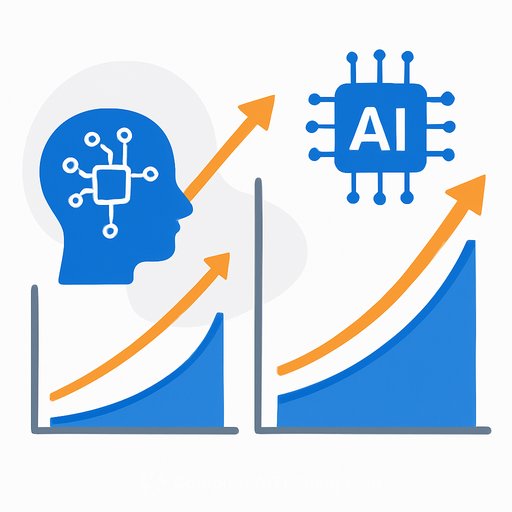The End of "Bigger Is Always Better" for AI
A new study out of MIT points to a shift many teams are already feeling: scaling giant AI models will deliver smaller gains while efficiency improvements make smaller models far more competitive.
If your roadmap assumes bigger models will keep pulling away, it's time to update the plan. The next advantage will come from efficiency, data quality, and system design-less from model size alone.
What's actually changing
- Scaling laws still hold, but returns fade as models get huge. Each extra dollar, watt, and token buys less performance than it used to. For context on scaling behavior, see early scaling laws research and compute-optimal training insights.
- Efficiency is compounding. Better architectures, training recipes, retrieval, quantization, and compilers push smaller models up the curve-often enough for production tasks.
- Over the next decade, expect more capable systems running on modest hardware. Latency, cost, and energy use start to matter more than leaderboard bragging rights.
Why this should change your roadmap
- IT leaders: Don't lock into massive, long-term GPU commitments without a clear task fit. Mix cloud APIs with right-sized on-prem and edge options.
- Developers: Optimize the system, not just the model. Retrieval, prompts, tools, caching, and evaluation pipelines often beat a parameter bump.
- Product teams: Focus on task-specific performance, cost per successful action, and reliability under real user behavior-not benchmark peaks.
Tactical moves for the next 6-12 months
- Right-size by task. Pair small or midsize models with retrieval for knowledge-heavy work; reserve large models for open-ended reasoning where they clearly win.
- Use efficient adaptation. Try LoRA or adapters, knowledge distillation into smaller models, and structured prompts/tool use before jumping model tiers.
- Cut inference cost. Quantize (e.g., int8/int4), batch requests, cache frequent outputs, and trim context. Every token and millisecond counts.
- Get your data house in order. High-signal datasets and feedback loops shift outcomes more than raw parameters.
- Build evaluations early. Track task success, time-to-first-token, end-to-end latency, cost per query, and failure modes. Automate regression checks.
- Design for portability. Abstract providers behind a thin interface so you can swap models as prices and performance move.
Your portfolio approach
- Foundation APIs for frontier tasks where they clearly win.
- Midsize open models fine-tuned for your domain to balance control, latency, and cost.
- Small, specialized models at the edge for privacy, uptime, and ultra-low latency needs.
Procurement and infrastructure questions
- Do we have a costed pathway to meet SLOs with small/midsize models first?
- Where does retrieval or tool use close the gap vs. a larger base model?
- What's our unit economics at 1x, 10x, and 100x usage-under real prompts and context lengths?
- How fast can we switch models or providers if pricing/performance shifts?
- What's our plan for data quality, labeling, and user feedback-monthly, not yearly?
Signals to watch
- Algorithmic efficiency gains that move small models up a tier.
- Compiler/runtime improvements that shrink latency and energy use.
- Better retrieval, memory, and tool orchestration that reduce dependence on massive base models.
- Clear, reproducible evals that reflect your tasks-not just public benchmarks.
Bottom line
Scale still matters, but efficiency is catching up fast. Treat "bigger" as a last resort, not the default. Teams that optimize systems, data, and workflows will ship faster, cheaper, and more reliably than those chasing parameter counts.
If you're building skills for this shift, see focused learning paths by role at Complete AI Training or explore new, practical courses at Latest AI Courses.
Your membership also unlocks:






